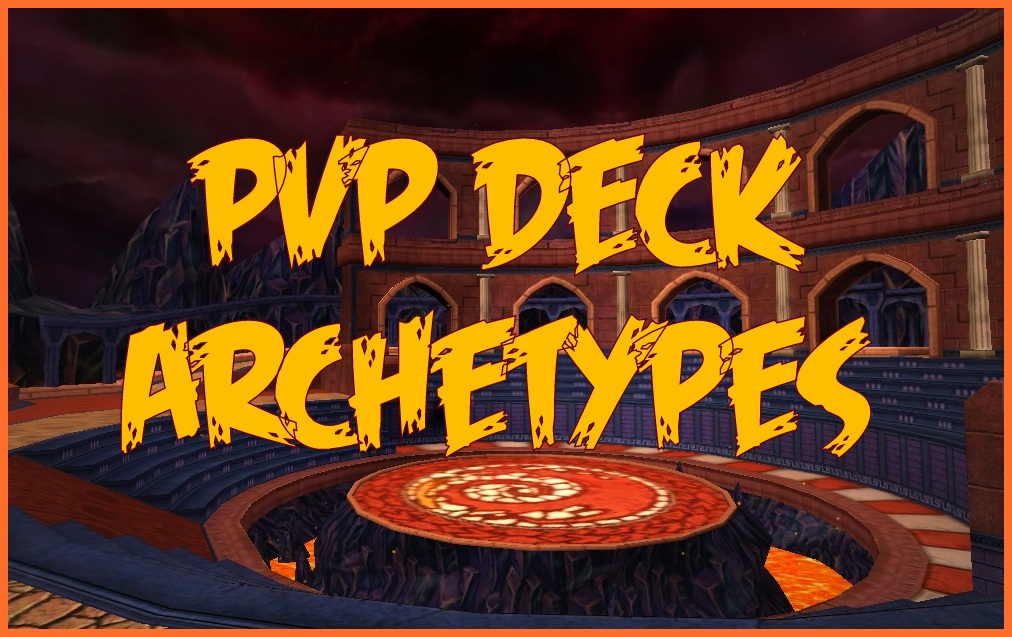November 10, 2013 October 2, 2018
An Overview of PvP Deck Types in Wizard101
Deck construction is arguably the most vital aspect of Wizard101 PvP and has been called an “art” in itself. The spells you choose to include in your deck determine your strategy and how you react to your opponents.
 Most players construct their PvP decks to complement their gear selection, pet talents, and training point spending for maximum effectiveness. Learning to recognize your opponents’ playstyle and knowing how to counter it is often what makes the difference between winning and losing a match. In this article, we’ll look at a few of the most common Deck Types used in Wizard101 PvP and how to counter them.
Most players construct their PvP decks to complement their gear selection, pet talents, and training point spending for maximum effectiveness. Learning to recognize your opponents’ playstyle and knowing how to counter it is often what makes the difference between winning and losing a match. In this article, we’ll look at a few of the most common Deck Types used in Wizard101 PvP and how to counter them.
The Tank Deck
A “Tank Deck” is centered around healing and defense to keep the player alive long enough to launch an attack of their own. Tanky players often combine their defensive strategy with gear that offers high resist and high heal boosts. “Jade players” are the ultimate tanks: top that off with Life Mastery amulet, a quad-heal pet, and plenty of Satyrs, and even the most aggressive players have a hard time making their damage stick.
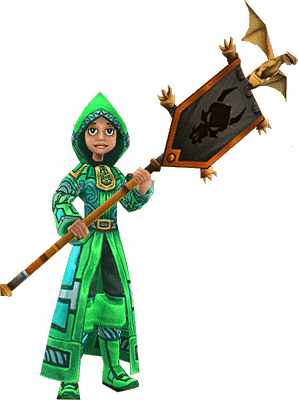
This low-tempo playstyle is used at all levels, but at upper levels tends to favor defensive schools like Ice and Life. Tank Decks will usually contain multiple copies of heals and shields, with plenty of Reshuffles to keep those heals flowing. The most commited tank deck practioners carry Sanctuary to boost their heals to astonishing levels. Players who practice tanking to an extreme are often referred to as “turtles” because of their ability to protect themselves.
Countering the Tank Deck
With the Aquila update, Tank Decks in top level PvP have dropped in effectiveness due to the high-Critical, high-Pierce gear available from the Tartarus dungeon. Hades gear coupled with an Infallible aura slices through resists like butter. The main drawback of these decks is that they are a slower playstyle, often requiring many turns to launch an effective attack. Savvy opponents will take advantage of those turns and use them in their favor.
The Blitzkrieg Deck
The “Blitzkrieg deck”, also known as “low pip hit spam”, was developed mostly as a counter for the Tank Deck but has gained increasing effectiveness and popularity in top-level PvP with the gear available from Aquila. The term “Blitzkrieg” is courtesy of an old Duelist101 contributor called Arcwarrior and derives from a German battle strategy in WWII which involved overwhelming the target with “a series of quick and decisive short battles to deliver a knockout blow to an enemy state before it could fully mobilize” (from Wikipedia).
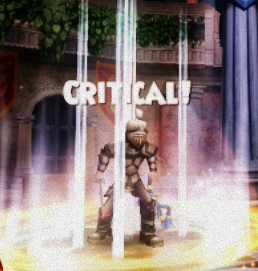 In addition to lots and lots of low-pip attacks, Blitzkrieg decks usually contain “auras” (such as Infallible) and “bubbles” (such as Wyldfire or Darkwind) which are useful in boosting attacks for several rounds to sustain an offense. Their primary advantages are that they severely limit the effectiveness of shielding and that they very quickly put an opponent at a disadvantage by incurring large amounts of damage in very few rounds. This is a high-tempo style that can be used effectively by any player, but the schools that often favor this strategy are Storm and Balance.
In addition to lots and lots of low-pip attacks, Blitzkrieg decks usually contain “auras” (such as Infallible) and “bubbles” (such as Wyldfire or Darkwind) which are useful in boosting attacks for several rounds to sustain an offense. Their primary advantages are that they severely limit the effectiveness of shielding and that they very quickly put an opponent at a disadvantage by incurring large amounts of damage in very few rounds. This is a high-tempo style that can be used effectively by any player, but the schools that often favor this strategy are Storm and Balance.
Blitzkrieg Deck afficiandos often combine this strategy with high-critical, high-pierce gear to maximize the damage output. These decks rarely carry more than one Reshuffle, if any, because they are intended to close out a match quickly and painfully. Amulets which add large amounts of health are usually favored over Mastery amulets to give the Blietzkrieg player a health buffer.
Countering the Blitzkrieg Deck
This deck is generally most effective at top-level and is difficult to counter. An effective method to defeat this playstyle is to play lower-pip spells such as Luminous Weaver, Vampire, etc. which deal damage while providing a useful effect. Blitzkrieg players often have low resist and low critical block, making them easy targets.
The Combo Deck
The “Combo Deck” contains a straightforward and effective strategy: build pips, cast Blades and Shields, then use an attack “combo” to deal lots of damage to the opponent that they cannot defend. Myth’s Basilisk is a great example of an effective combo starter because it stuns the target, leaving them paralyzed as more damage is dealt from the DoT and a follow-on Minotaur.

Combo decks are used at all levels and often consist of a DoT attack such as Skeletal Dragon / Snow Angel / Basilisk followed by a lower pip attack. Popular mid-level schools and combos are Poison/Skeletal Pirate (Death), Frostbite/Wyvern (Ice), Scald/Meteor (Fire), and Minotaur/Minotaur (Myth). “Setting up” the combo attack often includes casting multiple copies of your school blade, your damage bubble (if your school has one) and/or an aura, and 1-2 infections on the target so they cannot easily heal of the damage.
Countering the Combo Deck
Combo decks can often be countered with utility spells or damage spells that have “high utility” such as Efreet. Stun Blocks remove the threat of being immobilized from a stun. Earthquake in either its trained or Treasure Card form is useful for removing the opponent’s blades, and even better if you have access to Enfeeble. Mana Burn effectively removes the ability to combo by limiting pips. The Treasure or trained version of Triage is a great 0-pip method of limiting damage from a large DoT spell, although it’s particularly tricky to cast from second.
The OHKO Deck
The “OHKO Deck” works like this: stack as many blades and traps as you can, then deliver a massive “One-Hit KnockOut”. It is often used in conjunction with high-resist gear (such as Jade Gear) to give the player adequate defense during the multiple turns required to cast all those buffs. Ice and Fire are schools that are often found using the OHKO deck.
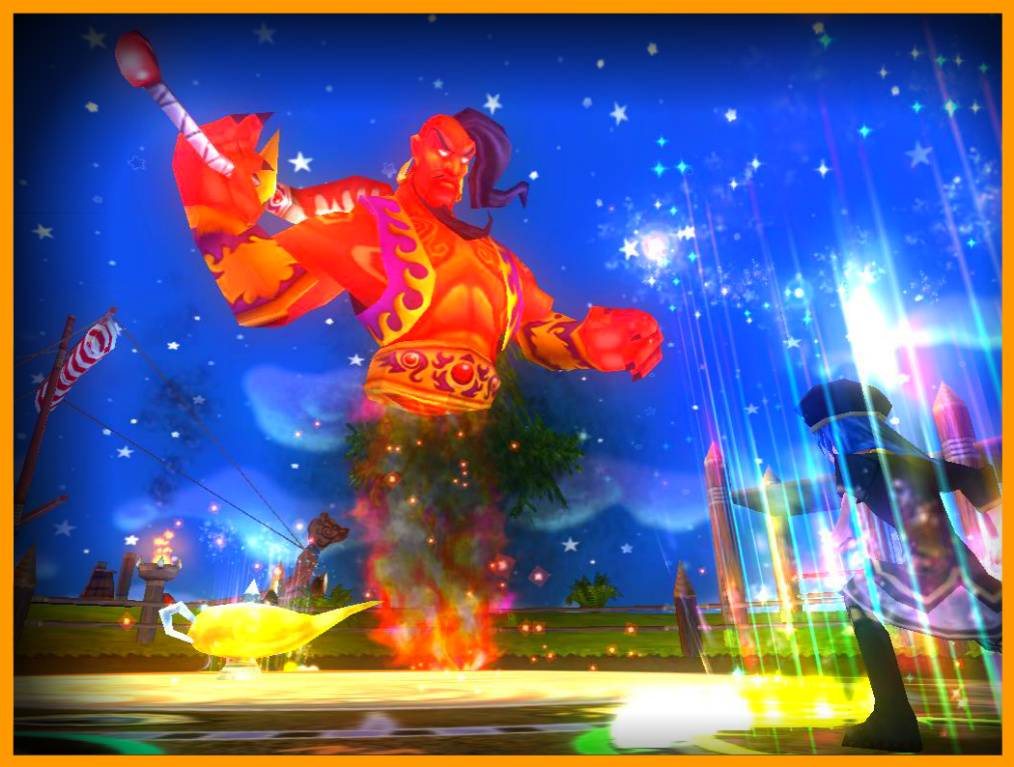
OHKO Deck users commonly use a Myth Mastery amulet and carry Shatter to remove shields prior to dealing the kill shot. Utility spells are helpful in countering the OHKO player, although excellent timing and a little luck are needed to properly execute them. Because Earthquake or Enfeeble are frequently used to remove blades, many OHKO Deck players have switched to stacking traps and feints, which are more difficult to remove.
Countering the OHKO Deck
To counter the OHKO player, carry a few special utility spells in your main or side deck. Myth dispels are used by some players to prevent or delay the use of Shatter. Self-hit spells like Empower, Dark Pact, or Sacrifice are utilized to remove Feints. Some players even carry TC versions of Cleanse Ward, or Immolate to remove stacked Fire traps. If all else fails, sometimes the best defense is a good offense; when it comes to OHKO Decks, “kill them before they kill you” may be the best strategy of all.
The Minion Deck
The “Minion Deck” was popular for players in the pre-Celestia era of PvP and remains an effective strategy for today’s low- and mid-level duelist. Minions in top level PvP are used more for utility than damage output, but at levels below 60 they can still pack a punch.
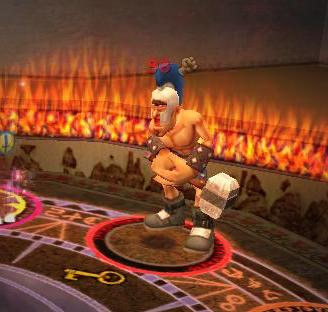
Minion decks usually consist of 5 or more minions along with spells to support them. Establishing your minion on the field is key to this strategy, which is why many mid-level PvP guides recommend shielding your minion to keep it in play as long as possible. Those same PvP guides also place a high emphasis on removing the opponent’s minions from the field as quickly as possible.
Countering the Minion Deck
Myth, Ice, and Fire are the schools with the most effective and most dangerous minions in low- to mid-level PvP, where Minion Decks are most popular. Countering a Minion Deck usually consists of having minions of your own and using your school’s AoE (if you have one) or an off-school low pip attack with a Mastery Amulet. The first turn advantage is more noticeable when Minion decks face off, as the player who goes first has the advantage of being able to shield their minion prior to an attack.
The Control Deck
The “Control Deck” relies heavily on utility spells and “efficiency” to control the opponent’s pips, heals, and attacks. Control deck players are always trying to gain the advantage by making their opponent’s strategy difficult to execute by using Weakness, Infection, Minions to box them into a corner. The purpose of the control deck is to give your opponent more problems than they can handle, leaving them powerless to react when you finally go in for the kill.

Control Decks often require a some experience and skill to master because they rely on prediction and good timing. They are widely used by Central Tournament duelists where the opponents are known prior to the match and there are rules that limit resist, heal boost, and spell usage. Players with Control Decks often discard aggressively, use Reshuffle to manage their deck, and utilize Mastery amulets for off-school utility spells.
Countering the Control Deck
Control Decks can fall apart in Ranked PvP when facing extreme builds such as a Blitzkrieg Deck that overwhelm them with high damage attacks. Control Deck vs Control Deck matches make for some of the most interesting and strategic duels in the game.
What kind of Deck Type do you use in PvP?
Tell us in the Comments!
